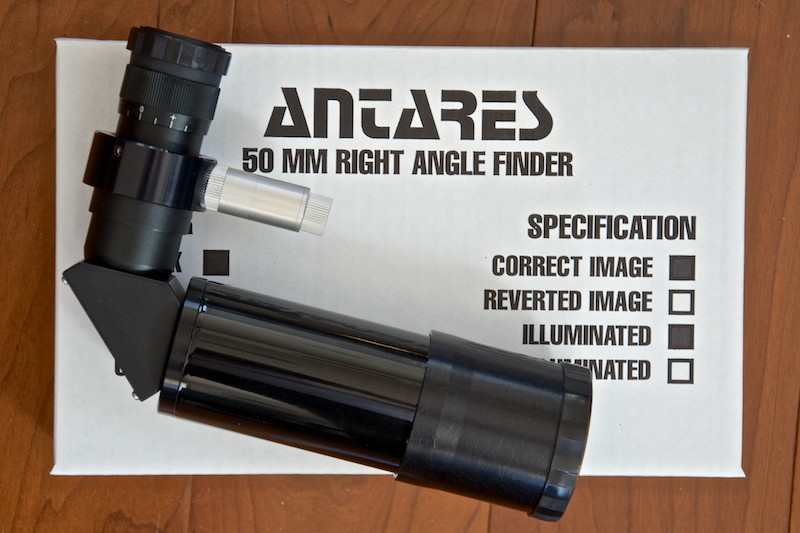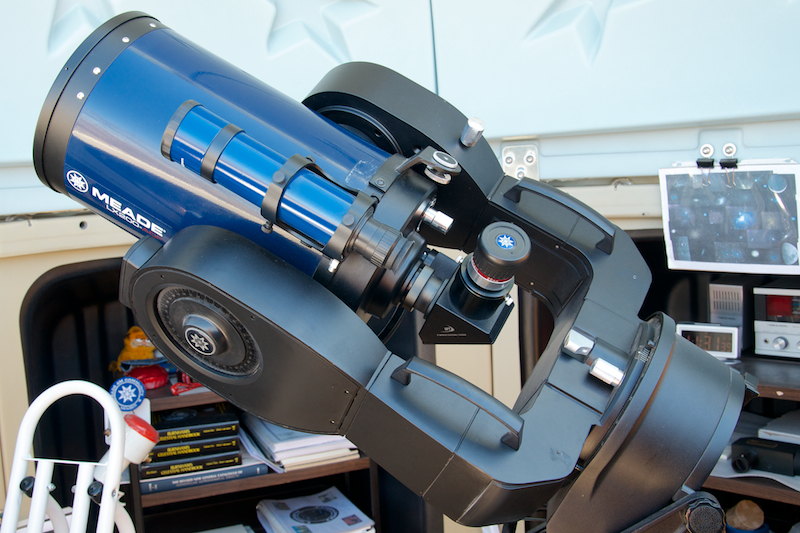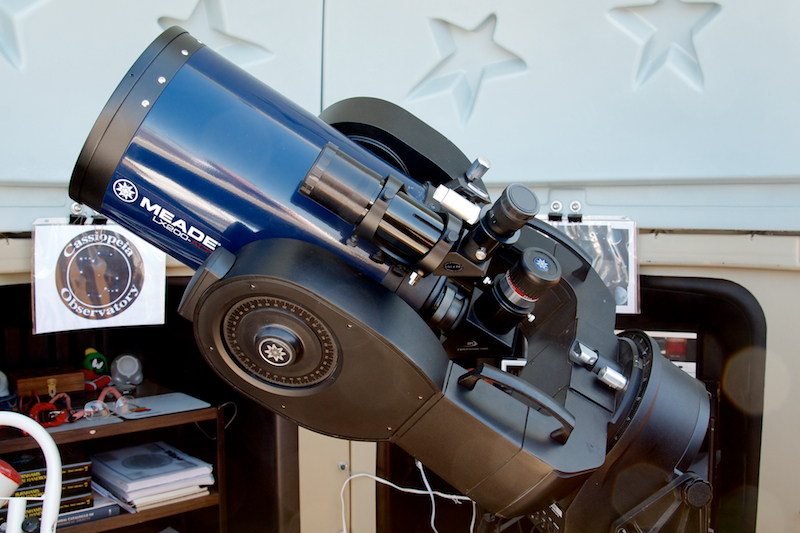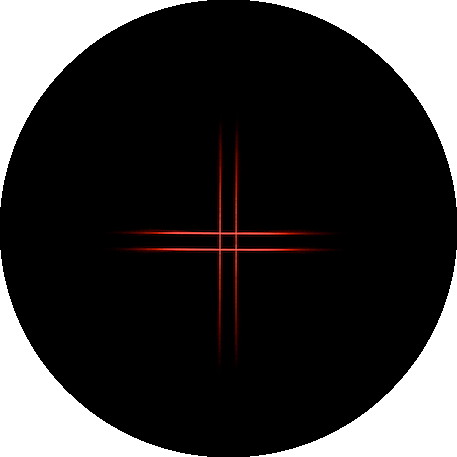
Antares 7x50 Illuminated Crosshairs Finderscope
Posted: 16 March 2013
With my permanently mounted Meade 8" LX200-ACF GOTO telescope I rarely use the Meade 8x50 finderscope. Over the past few years the finderscope has gotten its most use for tracking the International Space Station (ISS) while imaging the ISS through the 8" telescope. As many ISS passes occur after the sky is dark, seeing the non-illuminated crosshairs in the Meade finderscope is nearly impossible from my dark sky site. Hence I developed a strong desire for a new finderscope.
During a recent trip to California I stopped by OPT in Oceanside to check out the Antares 7x50 Illuminated Crosshairs Finderscope ($180). When it was first released, the finderscope had an illuminated red-dot eyepiece, but it now comes with two illuminated parallel crosshairs, which I prefer. And the Antares finderscope would fit the existing 8x50 finderscope bracket on the 8" LX200-ACF. The decision to purchase was easy.
As seen in this photo, the finderscope uses a diagonal:

With my wedge-mounted telescope, many times I would lose access to the straight-through finderscope while the telescope was pointed towards the North Celestial Pole during northward ISS passes:

The Antares finderscope avoids that problem:

The finderscope is focused by loosening the setscrew and sliding the eyepiece in/out. The crosshairs are focused by rotating the eyepiece. This is a view of the illuminated crosshairs (showing only the central portion of the eyepiece field-of-view):

The 1.25" eyepiece is removable and other standard 1.25" eyepieces can be used. I tested a Meade 12mm illuminated reticle eyepiece and a Meade Series 4000 9.7mm eyepiece. However, both eyepieces yielded too much magnification and the view through the finderscope was not very sharp. The illuminator used on the Antares finderscope is a standard style and my Rigel Systems PulsGuide could also be used (although I don't intend to use the PulsGuide for ISS tracking).
I did some night time tests using the Antares finderscope. The supplied illuminator is very bright, even when fully dimmed. If I need dimmer crosshairs I can always use the PulsGuide illuminator. The biggest drawback to the Antares finderscope is the optical quality. Even with the supplied eyepiece, getting a sharp view of objects requires that your eye be positioned in a very precise and small location on the optical axis. With GOTO telescopes, these are not serious flaws as the finderscope rarely gets used. On the other hand, if you plan on using the Antares finderscope to assist locating faint objects, you would probably be disappointed in the optical quality, especially with its high price.
Am I happy with my purchase? It seems to be adequate for my purpose (ISS tracking) and is a good replacement for the Meade finderscope for that purpose. I look forward to using the Antares finderscope during my next ISS imaging opportunity.
Comments are welcome; use the Comments section below, or you can Email Me. Thanks.
Go to the previous report.
Return to the Cassiopeia Observatory Home Page.